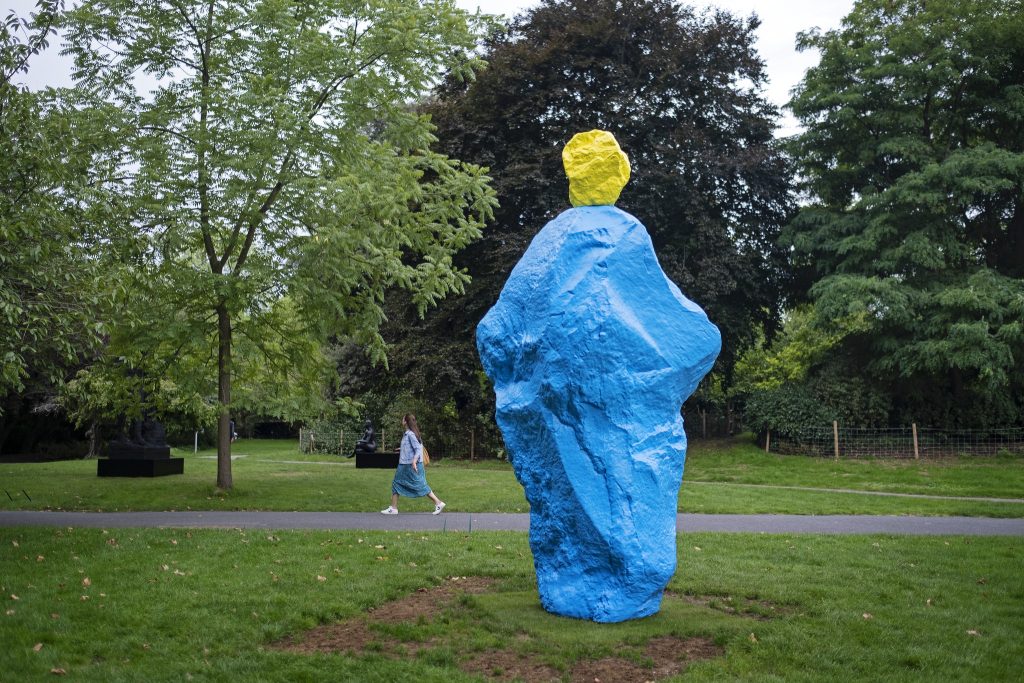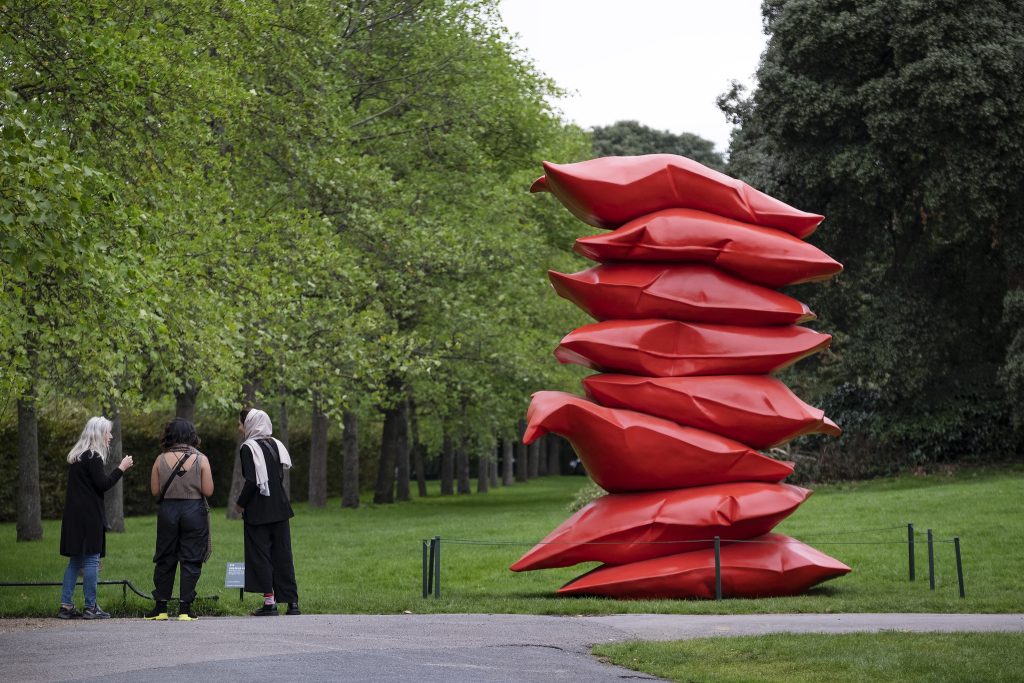Frieze Sculpture 2022: Large-Scale Highlights
Five of our favorite pieces at the outdoor show in Regent’s Park

Open now through 13 November and free to visit, Frieze Sculpture—curated by Claire Lilley—returns to London’s Regent’s Park for the 10th consecutive year. Sprawled throughout open greenery, each of the 19 large-scale sculptures proves itself to be as ideologically challenging as it is attractive, with sculptures exploring complex themes like environmentalism, materiality and the metaphysical. Spending time alongside all of these sculptures leaves visitors moved by their intensity, both physically and emotionally; five, however, stood out for the immense reactions they conjure.

Ugo Rondinone’s “yellow blue monk”
Swiss artist Ugo Rondinone has been celebrated for years for his work, with a particular emphasis on his lively and vibrant sculptures. Presented by Gladstone Gallery, “yellow blue monk” (2020) is one such piece. Standing at four meters tall, this limestone sculpture ponders the nature of environmental transcendence. Rondinone chose to utilize limestone because its numerous folds and breaks have the ability to mimic the movements we see in garments worn by monks and nuns while still remaining conscientious of the natural world, using a common stone rather than something metallic. Viewers are prompted to consider the notion that nature makes it possible for the monotonous to coexist alongside the metaphysical seamlessly as the neon yellow and blue monolith stands above them. Our environment is our greatest enabler when it comes to introspection.

Shaikha Al Mazrou’s “Red Stack”
Acclaimed artist and educator Shaikha Al Mazrou’s “Red Stack” (2022), presented by Lawrie Shabibi, is both introspective and colossal in nature. The massive piece, consisting of eight red geometric forms stacked on top of one another, prompts audiences to reckon with the overwhelming vastness of the space around us. Constructed from steel, it’s been shaped to resemble a softer, more flexible material similar to a balloon or pillow. Al Mazrou unifies the otherwise incompatible concepts of harshness in industrialism and softness in form by shaping steel into a yielding and delicate configuration. “Red Stack” invokes contemplations of simplicity and abstraction in its presentation.

John Giorno’s “SPACE MIRRORS MIND”
American artist, poet and late husband to Rondinone, John Giorno passed away in 2019 but his foundation continues to advance his legacy by posthumously exhibiting some of his previously unseen works. This particular piece, presented by Almine Rech, titled “SPACE MIRRORS MIND” from the artist’s Stone Poems series ruminates upon the dichotomy between the physical and the abstract. The glacial granite rock serves as a reminder of the tangibility of objects, while the poem engraved upon it speaks to the uncertainty and flexibility of language. There is an irony present throughout this piece, calling upon the viewer to reckon with the absurdity of rocks and language merging to become one. Words have the ability to be in flux, while material objects like the stone itself are embedded with certitude, yet this does not necessarily mean that the two must oppose one another.

Jordy Kerwick’s “Vertical Plane Me”
Australian artist Jordy Kerwick challenges the binaries of adolescence and adulthood in “Vertical Plane Me” (2022) presented by Vigo Gallery. The piece’s title refers to Ken Webster’s 1989 book The Vertical Plane which centers on various people who have, over centuries, all inhabited the same cottage at some point. By drawing inspiration from Webster’s book and reworking it conceptually into the medium of visual art, Kerwick’s own willingness to explore the boundaries of time and aging becomes apparent. The sculpture itself is mystical and magical at first glance and further exploration reveals Kerwick’s inclination to challenge and redefine concepts that are typically seen as childish or callow, such as the mythical creatures present in the piece.

Alicja Kwade’s “Tunnel – Tell (Ceci Sera)”
Polish artist Alicja Kwade’s “Tunnel – Tell (Ceci Sera)” (2020) poses questions regarding the ideology of reality. The sculpture, presented by König Galerie and Pace Gallery, consists of a boulder penetrated meticulously by a cylinder of stainless steel. When placed together, the two objects amalgamate seamlessly into a marriage of the natural and the industrial. By allowing us to see through the boulder, Kwade reminds us that an object’s definition depends on our perception. Reality is not a fixed term, but rather a concept to be questioned. This piece encourages viewers to reflect upon their own physicality and truth, thanks to its inclination to challenge what is already accepted.
All images courtesy of Linda Nylind/Frieze












